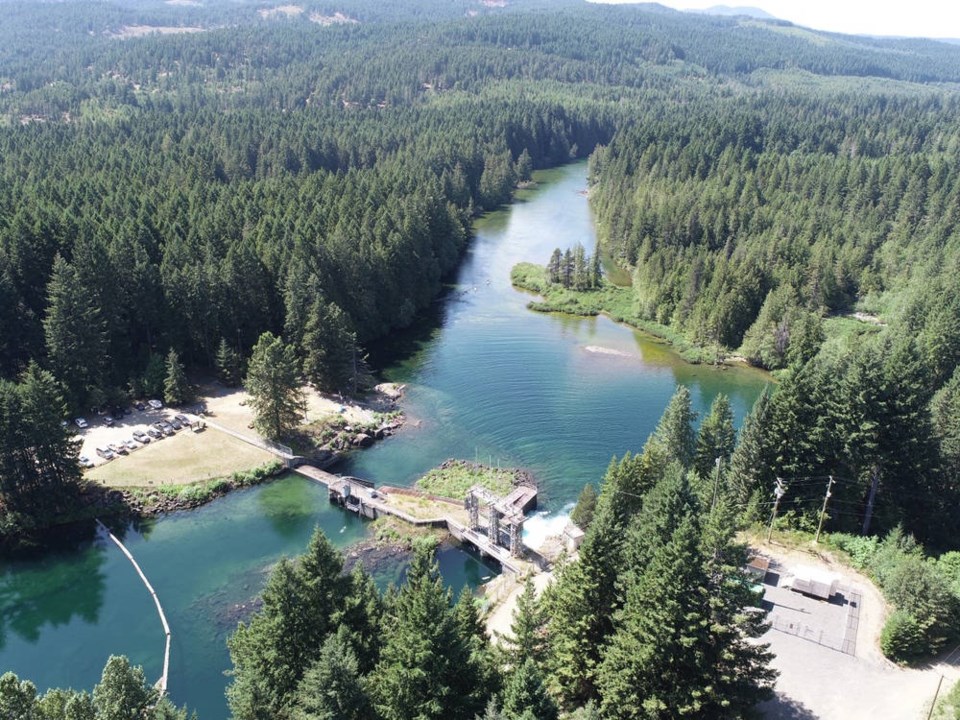B.C. Hydro is creating love nests for about 180 pairs of spawning chinook salmon returning to the Puntledge River.
The Crown corporation is placing 1,350 cubic metres of gravel in the river to be used by the prized fish. It will go in on the left bank of the river, downstream from the Comox Dam picnic area.
“Chinook salmon are a key species and this gravel placement work is an outcome of our Puntledge River water-use planning process,” said B.C. Hydro spokesman Stephen Watson.
Dams on the Puntledge River have prevented gravel from moving down the river, Watson said.
This won’t be the only added gravel bed for salmon on the Puntledge.
Other groups have created gravel pads elsewhere on the river to support different species of salmon. Those projects were funded by the fish and wildlife compensation program, a partnership between the federal and provincial governments, First Nations, B.C. Hydro and public stakeholders.
The Comox Dam picnic area on the Puntledge will be closed from Aug. 30 to about Sept. 30. The public parking lot and picnic area will be used to store gravel and park construction vehicles, which will be going to and from the river.
Falling numbers of chinook salmon have led the federal government to restrict fishing opportunities in B.C., affecting commercial and recreational fishermen. The province’s tourism sector includes fishing guides as well as hotels and lodges serving anglers who hope to pull in a huge silver chinook, which can reach 50 pounds or more.
Declines in chinook populations affect B.C.’s endangered southern resident killer whales, who rely on them for food.
Fisheries scientists have been studying the loss of chinook stocks. Some are concentrating research on what is happening in the Pacific Ocean, where salmon spend most of their lives. They look at where they live in the open ocean, temperatures, what they eat and availability of prey. Chinook may stay away from their home streams for five years.
Other research is examining what’s happening closer to shore and inland, where salmon spawn and rear in fresh waters.
Researchers at the University of British Columbia and the Raincoast Conservation Foundation said in a report on Aug. 5 that salmon in the lower Fraser River region on the mainland have lost access to up to 85 per cent of their historical floodplain habitat because of dikes and structures such as dams, floodgates and road culverts.
“Only around 101 square kilometers out of an estimated 659 square kilometres of historical floodplains remain accessible to salmon,” said lead author Riley Finn, of the university’s conservation decisions lab in the faculty of forestry.
“This loss is particularly critical for populations of coho and chinook, which rely more heavily on these habitats for rearing, compared to other types of salmon,” Finn said.
More than 1,200 barriers are stopping salmon from reaching about 2,224 kilometres of streams, he said.
Tara Martin, a lead author of the report, said: “If salmon do not have sufficient habitat to breed and complete their life cycle, then none of the other conservation management actions we take will matter.”



